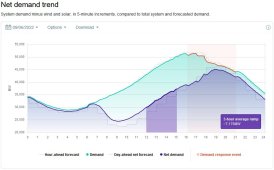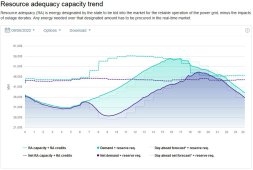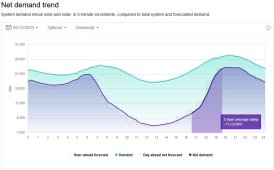Altruism does not feed your family. People want to earn an income to live.
We want to earn an income and PG&E wants to earn an income and people sitting on the PUC board want to earn an income.
Some producers have negotiating power and lobbyists. Rooftop PV owners to not. The closest we come is PV installers who want a market.
The goal should be a reliable grid, cleaner environment, improved national security. That is where someone with altruistic motives could come in.
Utility and PUC will do everything they can to screw over the consumer. PG&E (and others) request was an $0.08/kWh photon tax and $0.05 credit for backfeeding power, which works out to net $0.03 charge to consumers for every kWh we give PG&E (so they can sell it for $0.25 to our neighbor.) And $0.08/kWh net charge for power we make and use ourselves. PUC's approved plan was $0.05 charge for PV production and $0.05 credit for backfeed (we were to receive a big fat zero.) I proposed we ought to also be charged for raindrops that water our yard.
To me, the solution is a Solar Embargo, where all rooftop PV users shut off our generation on a hot day and collapse the grid, bringing California, Oregon, Washinton, Vancouver, Ensenada to a grinding halt. Then we negotiate the rate we charge for our power. (If you don't like that approach, give us a fair credit for exports.)
It's literally an observation of system behavior. Demand on the grid goes down in midday as more solar is connected. I don't see how this is a lie.
You can draw any similar graph, for instance total of all consumption minus peaker plants. That would show power from peaker plants is not needed because it only comes when powrer consumption is lowest, early evening.
I call the Duck's Back curve a lie, because it appears to show demand is lowest when PV is producing, but that is when demand is highest. It is used to show that net metering or good credits for backfeed should be eliminated, when in fact the grid could not stay up without rooftop solar. Because utilities and wholesale generators have not put in the capacity for actual demand.
Whatever PG&E did not spend on infrastructure to deliver total power demand (because it is generated locally) is part of the value of rooftop PV. What they did not spend to buy that 8GW to 14GW, is part of the value. The higher natural gas prices which would exist to support 8 ~ 14 GW of peaker plant is part of the saved power price. Which was especially high in the West recently.






